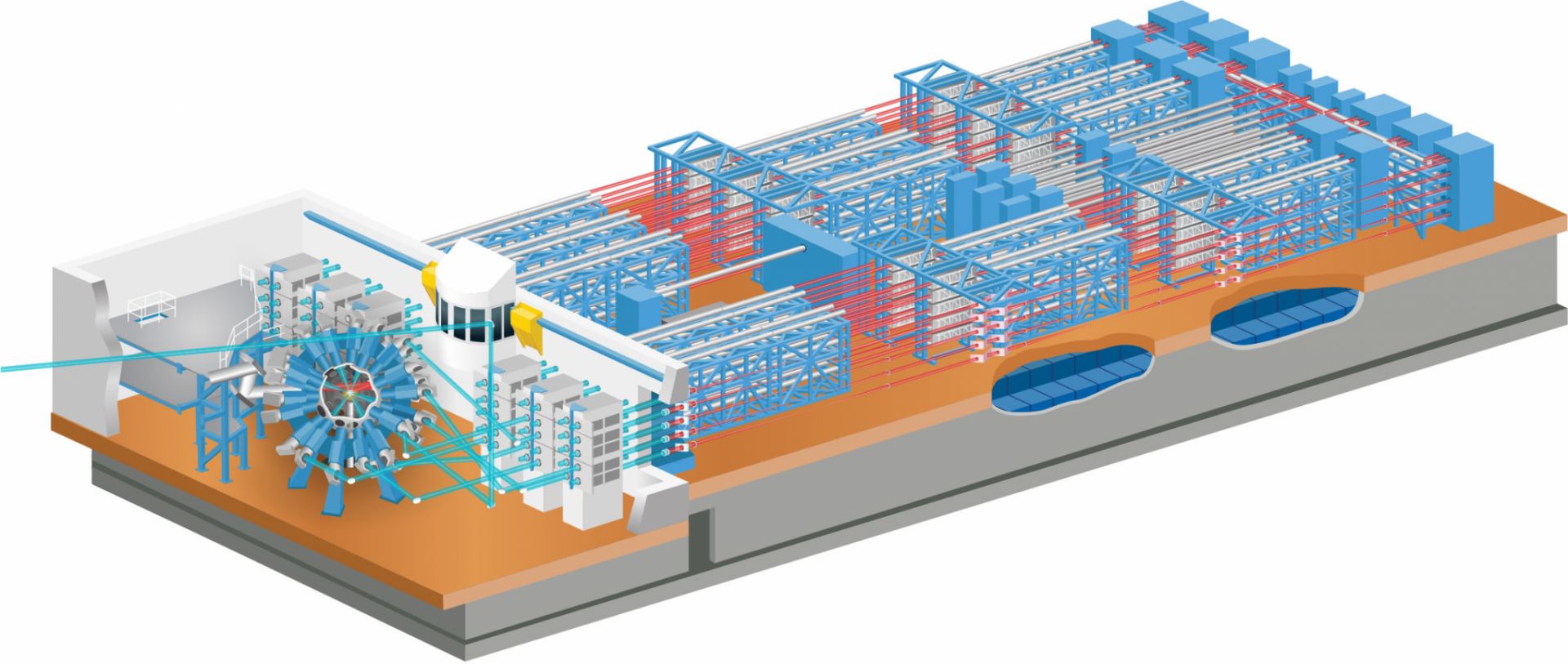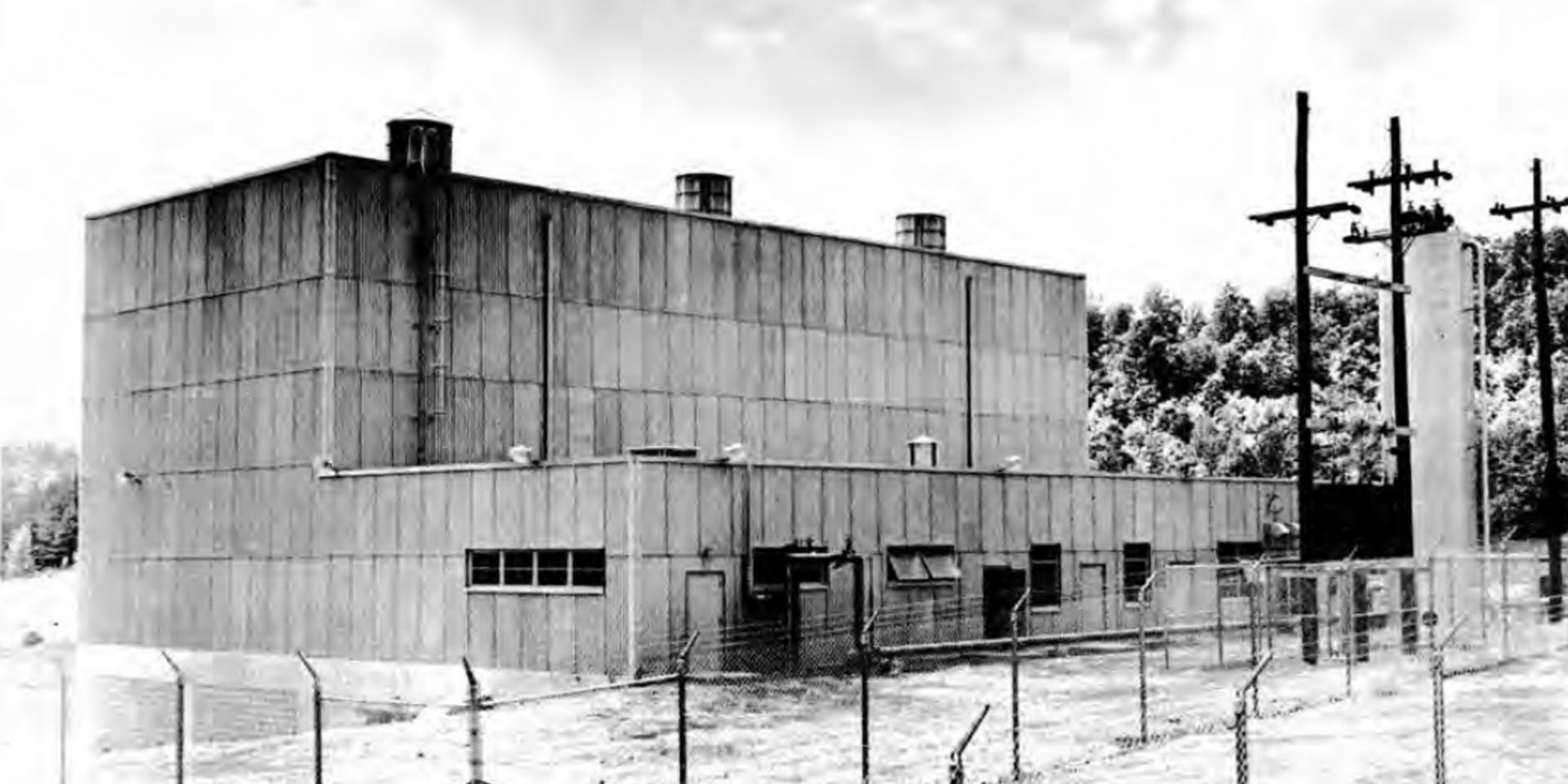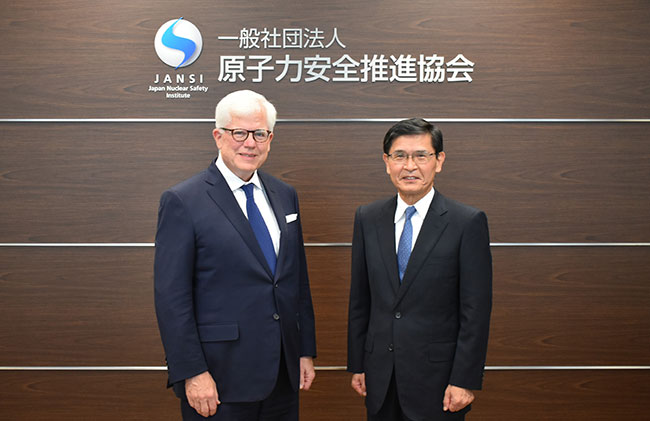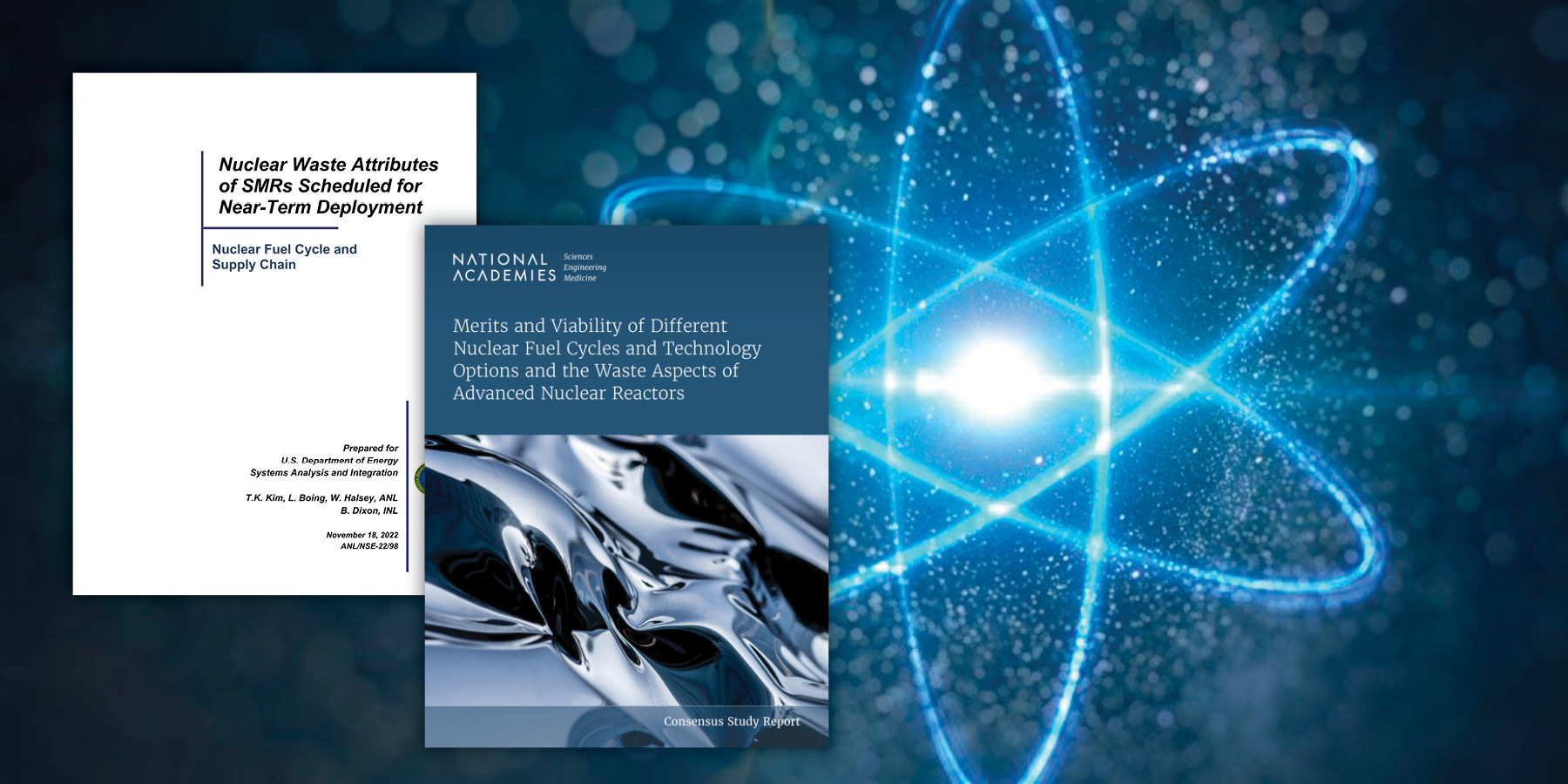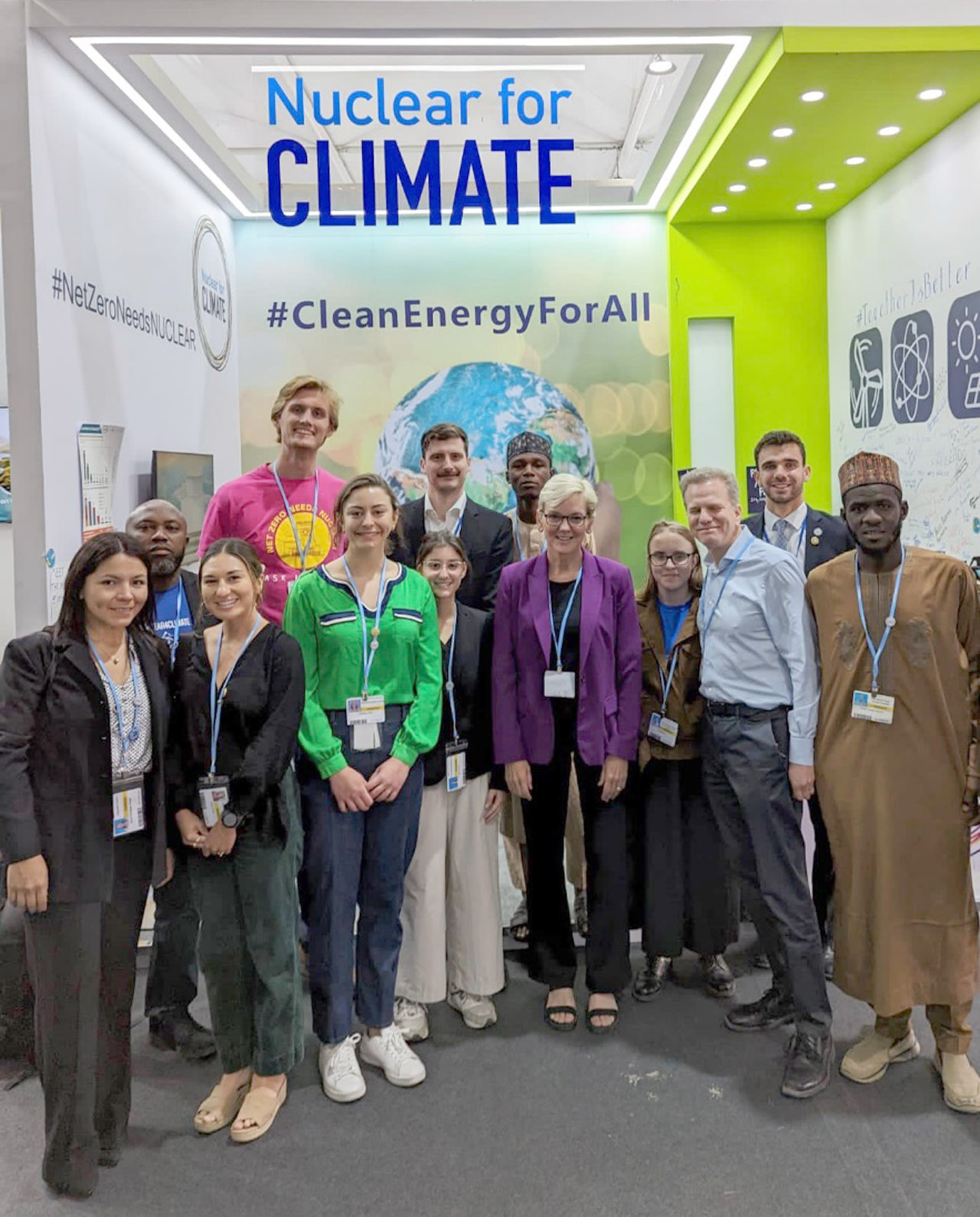The Yakutia awaits launch at St. Petersburg’s Baltic Shipyard on Nov. 22. (Photo: TASS/Valentin Yegorshin)
Advancing its efforts to develop the Arctic and establish new energy markets, Russia launched a new nuclear-powered icebreaker, the Yakutia, in St. Petersburg during a November 22 ceremony. At the launching in the northern Russian port city, the Russian flag was raised on another nuclear icebreaker, the Ural. Overseeing the events via video link from the Kremlin, Russian president Vladimir Putin said that the icebreakers “were laid down as part of a large serial project and are part of our large-scale, systematic work to reequip and replenish the domestic icebreaker fleet, to strengthen Russia's status as a great Arctic power.”
The JET tokamak. (Photo: European Consortium for the Development)
Nuclear fusion “might actually be on the cusp of commercial viability” today, says a recent article in Fortune magazine. The article offers a brief review of recent technical and entrepreneurial developments in fusion energy. It also places these developments in perspective regarding the hurdles that remain before commercialization can be realized.
Philippine president Ferdinand R. Marcos Jr. and Vice President Harris meet in Manila on November 21. (Photo: Office of the Press Secretary, Republic of the Philippines)
During a recent weeklong trip to Southeast Asia aimed at bolstering U.S. economic and security ties in the region, Vice President Kamala Harris announced the launch of nuclear energy partnerships with Thailand and the Philippines.
Currently, neither country enjoys the benefits of nuclear power. Both rely primarily on some mix of petroleum, natural gas, and coal for their energy needs.
Diagram of the University of Rochester Laboratory for Laser Energetics’ OMEGA laser system. (Image: University of Rochester)
A study recently published in Nature Communications brings a new perspective on how radiation travels through dense plasmas, potentially leading to a better understanding of the evolution of stars and the development of controlled nuclear fusion reactions. Researchers led by investigators at the University of Rochester Laboratory for Laser Energetics (LLE) achieved their findings by conducting experiments with LLE’s OMEGA laser system. This extensive system, which is 19 meters tall and 70 meters long, consists of 60 laser beams that can focus as much as 30,000 joules of energy onto a target for the study of nuclear and fluid dynamic events.
A room full of displays at the Art of the Reactor exhibit. (Photo: IIT)
Nuclear power plant cooling towers are easily recognizable for their familiar hyperboloid shape. But an art exhibit running at the Illinois Institute of Technology in Chicago aims to give visitors a different perspective.
The Art of the Reactor, an exhibit by the National Museum of Nuclear Science and History and hosted by IIT’s Lewis College of Science and Letters, opened on November 4 and runs until Sunday, December 4 at Hermann Hall on the IIT campus.
Tarik Choho, Westinghouse nuclear fuel president (left, foreground), and Simon-Erik Ollus, executive vice president of Fortum Generation, shake hands after signing the VVER-440 fuel contract, surrounded by Fortum and Westinghouse team members. (Photo: Westinghouse)
Westinghouse Electric Company and Finnish energy company Fortum have jointly announced the signing of a long-term partnership to develop, license, and supply VVER-440 fuel to Finland’s two-unit Loviisa nuclear power plant.
The ARE building at ORNL. (Photo: ORNL)
Experimentation on the world’s first molten salt reactor to potentially power aircraft was already underway in November 1954, being carried out by the U.S. Air Force. Oak Ridge National Laboratory was the scene for the power-dense, high-temperature reactor experiment known as the Aircraft Reactor Experiment (ARE).
JANSI’s chairman William Edward Webster Jr. (left), and president and CEO Hiromi Yamazaki. (Photo: JANSI)
The Japan Nuclear Safety Institute (JANSI) marked its 10th anniversary on November 15 by publishing a letter that highlighted some of the organization’s greatest accomplishments of the past decade. In the letter, William Edward Webster Jr., chairman of the JANSI board of directors, and Hiromi Yamazaki, JANSI president and chief executive officer, expressed their “sincere gratitude to all our members and other stakeholders who have provided support and guidance over the past 10 years.”
The TRIGA Mark II nuclear research reactor. (Photo: University of Texas)
The Nuclear Regulatory Commission has conducted a special inspection at the University of Texas’s TRIGA Mark II nuclear research reactor in Austin to evaluate the use of improper fuel. The inspection was ordered following a notification from the University of Texas—Austin to the NRC that the research reactor had been operating for several months with two fuel elements that were not licensed for the reactor.
The Palisades nuclear power plant, in Michigan, before it was permanently closed. (Photo: Holtec)
Pacific Gas & Electric’s two-unit Diablo Canyon plant—California’s lone operating nuclear power facility—has been deemed eligible for the initial round of funding from the Civil Nuclear Credit (CNC) Program, the Department of Energy announced yesterday.
The decision was welcomed by a nuclear community disappointed by last Friday’s news that the DOE had rejected Holtec International’s CNC application for the recently closed Palisades nuclear plant in Michigan, despite support for the effort from Gov. Gretchen Whitmer.
Energy secretary Jennifer Granholm (in purple blazer) and the ANS-sponsored delegates pose in front of the Nuclear for Climate booth at COP27.
Nuclear energy is no longer on the fringes of the international climate conversation. At COP27, the United Nations climate change conference held in Sharm el-Sheikh, Egypt, from November 6 to 18, pronuclear advocates were everywhere—and they were talking to everyone. They populated the International Atomic Energy Agency’s #Atoms4Climate pavilion, the first-ever nuclear pavilion in the 27-year history of the negotiations. Echoing such strong representation, the final statement issued by the conference used language that included nuclear power.
The molten salt test loop at ACU’s NEXT Lab. (Photo: Jeremy Enlow/SteelShutter)
The Nuclear Regulatory Commission has announced that it will review a construction permit submitted by the Nuclear Energy eXperimental Testing (NEXT) Laboratory at Abilene Christian University for the lab’s planned molten salt research reactor (MSRR). The NRC informed Rusty Towell, director of the NEXT Lab and professor in ACU’s Department of Engineering and Physics, about its acceptance of the construction permit review in a November 18 letter. The NEXT Lab had submitted the construction permit application on August 15; it was the first-ever university application for an advanced research reactor. On October 14, they provided the NRC with additional information about instrumentation and controls. (Nuclear News featured an article about the NEXT Lab and the MSRR in the November issue.)






